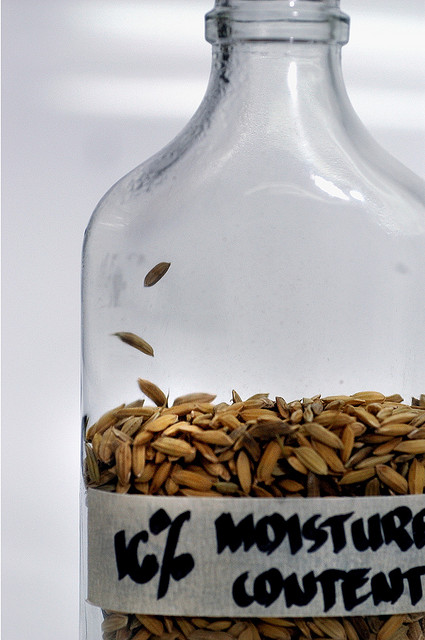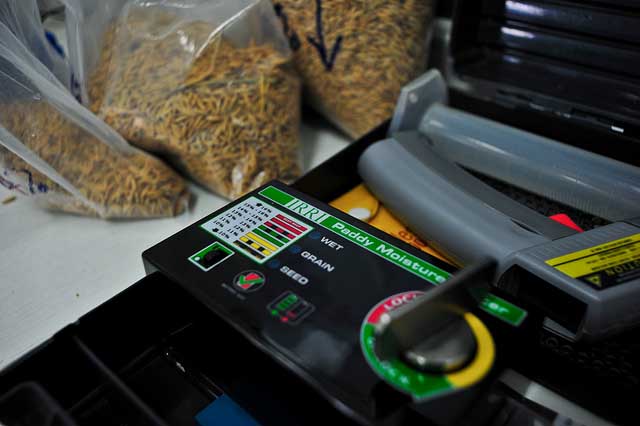Measuring moisture content
Moisture content (MC) is the weight of water contained in paddy or rice expressed in percent. MC is usually referred to the wet basis meaning the total weight of the grain including the water (MCwb). For research moisture content referred to the dry matter of the grain is sometimes used (MCdb).
Why is measuring the moisture content important?
Accurate moisture content testing is important in managing and marketing paddy and rice because depending on the purpose rice has different ideal moisture contents. Inaccurate moisture content measurements lead to:
- Extra drying cost and harvesting loss if paddy is harvested wetter than necessary
- Spoilage if the grain is too wet in storage
- Extra drying cost and loss of quality if paddy is dried too far
- Lower head rice when milled at wrong MC
- Weight loss (loss in profit) if grain is sold too dry
How to measure moisture content
Moisture content of grain can be measured by using either:
- primary method, based on weight measurements like the (a) oven method or an (b) infrared moisture balance or
- secondary method, using an electronic instrument that uses electrical characteristics of the grains.
Read: Primary versus secondary method of measuring MC
Many different types of portable grain moisture meters can be used to measure the moisture content. When selecting a meter, make sure it is suitable for harvesting paddy or milling grain, depending on which activity you are doing.
Read: Types of portable moisture meters
in Harvesting
Higher moisture content results in more losses from poor grain quality; while, lower moisture content results in more losses from shattering.
For measuring moisture content during harvesting, the most practical option is to use a resistance-type moisture meter that gives quick results and only uses small samples.
The capacitive moisture meters are more expensive, require a larger sample, but are more accurate than resistance type units.
in Drying
Grains need to be dried to below 14%, and seeds should be dried to below 12%.

Paddy should be dried to safe moisture content within 24 hours after harvesting to avoid damage and deterioration. Improper drying and storage practices lead to low grain or seed quality.
Read: What are the problems related to incomplete or untimely drying or storage of paddy?
Table: Comparison of methods used in measuring moisture content for drying
in Storage
Grains should be dried to a certain moisture content (MC) depending on storage period to avoid potential problems:
|
Storage period |
Required MC for safe storage |
Potential problems |
|
weeks to a few months |
14% or less |
molds, discoloration, respiration loss |
|
8–12 months |
13% or less |
insect damage |
|
storage of farmer's seeds |
12% or less |
loss of germination |
|
<1 year |
9% or less |
loss of germination |
A rule of thumb for seed is that the life of the seed will be halved for every 1% increase in moisture content or a 5°C increase in storage temperature.
in Milling
For milling, the ideal moisture content is between 13 and 14%.
Yield measurements also need to be corrected for a standardized moisture content of 14%.
The following table summarizes the target moisture content for each of the key postproduction operation:
|
Operation |
Desired moisture content |
Primary losses |
|
Harvesting |
|
|
|
Threshing |
|
|
|
Drying |
|
|
|
Storage |
|
|
|
Milling |
|
|
